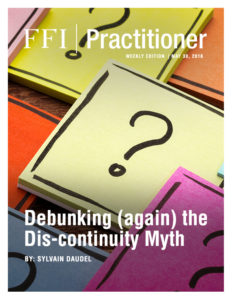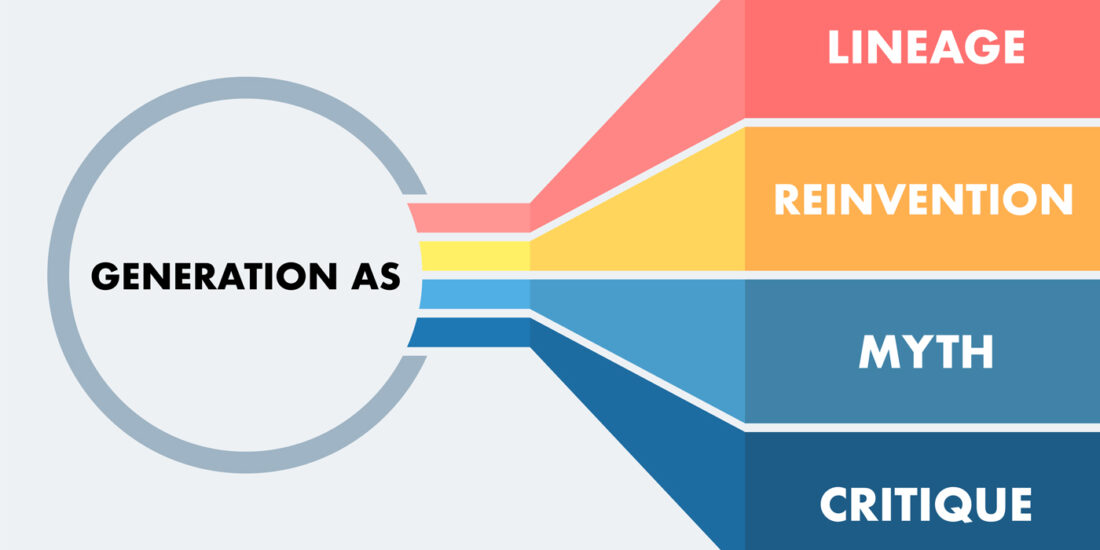
View this edition in our enhanced digital edition format with supporting visual insight and information.
Thanks to Sylvain Daudel of Stetson University for adding to several provocative FFI Practitioner articles on the topic of generational transition! He argues that the paradigm is wrong — it’s not about longevity but about value creation.
Mary, I am sorry!
I had just arrived at Stetson University and, after reading a press release draft about my appointment, I wrote back to Mary, our Media Relations officer, questioning the sentence: “Unfortunately, less than 30% of family-owned businesses make it to the second generation, and only 12% make it to the third generation.”
I knew it was the generally accepted ‘unfortunate truth,’ but felt it was ‘bad news’ that would taint the overall message. Moreover, I know I was reacting against this widespread habit to present a negative comment to elicit a stronger emotional response.
Mary tried her luck in another press release after Christmas: “It is estimated that 80 to 90% of all businesses in North America are family-owned, managed or controlled. However, less than 30% make it to the second generation, and barely 12% make it to the third generation.”
This time around, I answered in a less than friendly fashion stating that we “do not need the negative sentence about family businesses that do not survive.” And again, I felt I had some very good reasons to ask her to strike this out: it was a press release presenting some good news about our work at the Family Enterprise Center, and we did not need the negative sentence about the anti-survival of family firms.
Mary, you are right!
I commented on this exchange with colleagues, students, friends, family business owners, and ultimately, my wife and daughters. And they all said that I was downright wrong. When it is the truth, let’s tell it as it is, they said!
I actually start many classes on family-owned enterprise like this. I tell students about the superior performance of family firms, and we list some of their strengths in terms of identity and values, long-term view in decision-making, strategic flexibility, sustainability, commitment to continuity, patient capital, retention of employees, reputation, and financial prudence… and… I end the optimistic streak with the famous curse concerning the collapsing rate of family firms: 88% of them collapse before being passed on to the third generation.
And, by the way, we make it even more universal when we list some sayings from around the world, telling the same story about family enterprises:
“Generations pass while some trees stand, and old families last not three oaks.”
“Pai Rico, Filho Nobre, Neto Pobre.”
“Erwerben, Vererben, Verderben.”
“Padre Bodeguero, Hijo Millonario, Nieto Pordiosero.”
“Förvärva, Ärva , Fördärva.”
“La première génération la crée, la deuxième la developpe, la troisième la tue.”
« 副不过三代 »
…etc.
They all are variations of the classical “From shirtsleeves to shirtsleeves in three generations.” Even Shakespeare warned us: “The children of the children are indifferent.”
Mary, let me explain!
Some scholars have previously questioned the derogatory comment about family firms survival rate – “barely 12% make it” — as well as how delusional it is to try and compare it to non-family owned companies, and assess whether 12% is good or bad.
When we talk about two generations, we implicitly take the firm to its 50th birthday (a generation is usually counted as 25 years). How many non-family owned firms are able to celebrate their 50th? And the answer is very few.
Suppose we take the world of start-ups as another example. They also tend to have a short life expectancy whatever ‘reliable’ source of information you take:
- Some generally accepted ‘unfortunate truth’ about start-ups tells us that a high percentage — between 80% and 90% – of them fail.
- Another survey calculates that more than half of small businesses fail in the first four years.
Again, the idea is not to compare – we already said that it is almost impossible — but to ask a question: When you launch a start-up, are you competing for endurance or for winning customers over? My own answer to that question is that an entrepreneur’s interest is primarily to keep busy satisfying a customer’s need. If the company were lacking the support of customers, why would you aim for keeping it alive?
My point is that longevity is not the metric you want to use to distribute awards in start-up land.
Mary, let’s talk again!
In business in general, we are not competing for longevity, we are competing for value creation. Now, because we are talking about family firms, we may want to attach a family component to the performance metric. Why would longevity be the right performance metric to add in the world of family-owned businesses?
I think the main reason comes from a mix-up between long life and long term. Less enslaved or bound to quarterly numbers than their publicly-owned counterparts, family businesses can indeed think longer term, and some actually do to continue creating value for their market. However, this is not yet the family component we are looking for.
In my sense, the family component is that in a world that has become more complex, more global, more competitive, and more uncertain, family businesses remain among the few institutions that still succeed in transmitting positive values.
This is why I would urge the Mary’s of this world to change their paradigm and try the following:
“After three generations, close to 12% of family-owned businesses continue to successfully create value and transmit positive values.”
I understand it is a positive message that may be weaker in media relations terms, but it may convey more insight than the previous one!
Mary, make this one stick!
About the contributor
 Sylvain Daudel is professor of practice in family enterprise and director of the Family Enterprise Center at Stetson University in DeLand, FL. Formerly with INSEAD and EDHEC Family Business Center, he has also consulted for companies such as Nestle, Orange, and Cambridge University and has presented at the FFI global conference. He can be reached at sdaudel@stetson.edu.
Sylvain Daudel is professor of practice in family enterprise and director of the Family Enterprise Center at Stetson University in DeLand, FL. Formerly with INSEAD and EDHEC Family Business Center, he has also consulted for companies such as Nestle, Orange, and Cambridge University and has presented at the FFI global conference. He can be reached at sdaudel@stetson.edu.
About Stetson University Family Enterprise Center
Created in 1998 to address the challenges that family owned and managed business face, Stetson’s Family Enterprise Center helps next generation and family members understand and navigate the challenges of family ownership. The center strives to have an impact on the sustainability of family run enterprises at the local, national and international level.

View this edition in our enhanced digital edition format with supporting visual insight and information.





